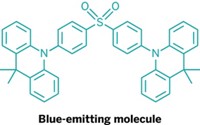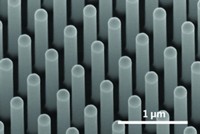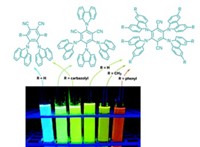Advertisement
Grab your lab coat. Let's get started
Welcome!
Welcome!
Create an account below to get 6 C&EN articles per month, receive newsletters and more - all free.
It seems this is your first time logging in online. Please enter the following information to continue.
As an ACS member you automatically get access to this site. All we need is few more details to create your reading experience.
Not you? Sign in with a different account.
Not you? Sign in with a different account.
ERROR 1
ERROR 1
ERROR 2
ERROR 2
ERROR 2
ERROR 2
ERROR 2
Password and Confirm password must match.
If you have an ACS member number, please enter it here so we can link this account to your membership. (optional)
ERROR 2
ACS values your privacy. By submitting your information, you are gaining access to C&EN and subscribing to our weekly newsletter. We use the information you provide to make your reading experience better, and we will never sell your data to third party members.
Materials
Nanotubes Improve OLED Performance
Low-voltage transistors incorporating carbon nanotubes could make large OLED display screens a practical possibility
by Elizabeth K. Wilson
April 28, 2011
| A version of this story appeared in
Volume 89, Issue 18
An organic light-emitting diode (OLED) with a low-voltage transistor incorporating carbon nanotubes in place of the traditional power-hungry silicon-based transistor could make large OLED display screens a practical possibility, according to a report (Science, DOI: 10.1126/science.1203052). Although OLEDs offer color quality and contrast advantages over liquid crystal displays, transistor power-consumption limits OLED usefulness for applications such as TVs and computers. Currently, OLEDs can be found in small handheld devices such as cell phones. Andrew G. Rinzler and Mitchell A. McCarthy of the University of Florida and colleagues had previously shown that thin-film transistors consisting of a network of single-walled carbon nanotubes require relatively little power to drive the electronic action of OLEDs. The team has now prepared fully operational OLEDs incorporating the nanotube-based transistors. These devices produce bright red, blue, and green pixels comparable to those of traditional OLEDs, but at much lower voltages. The researchers note that the pixels can switch on and off rapidly enough to be useful in applications such as high-definition TVs.






Join the conversation
Contact the reporter
Submit a Letter to the Editor for publication
Engage with us on Twitter